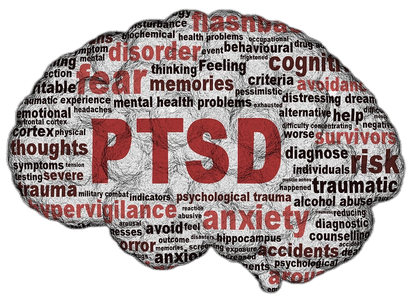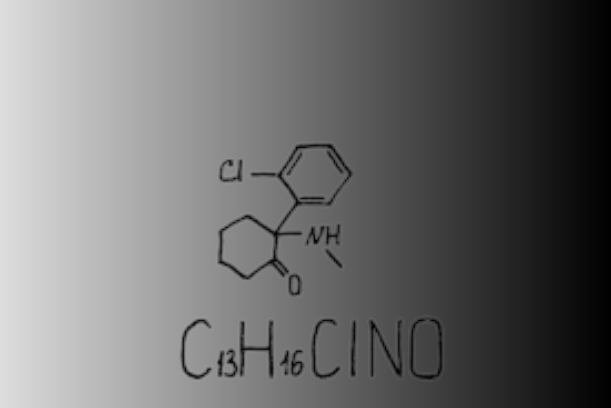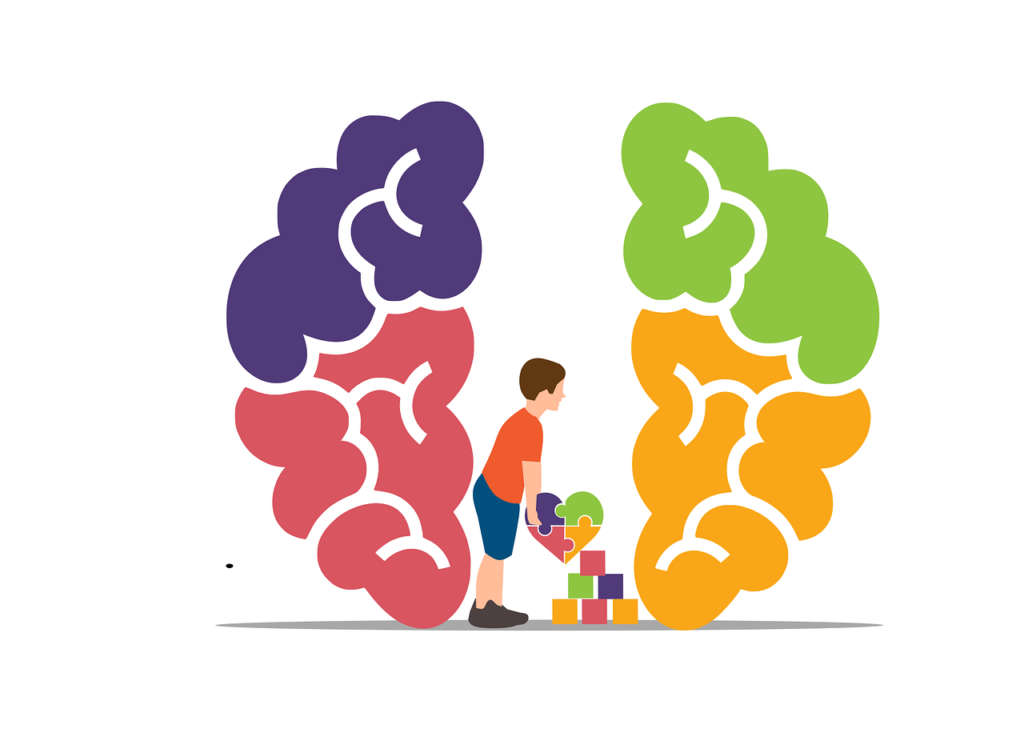The use of ketamine infusion therapy might be beneficial. According to research, ketamine has also few adverse effects and can treat depression, anxiety, and other PTSD-related disorders. Continue reading to find out more about ketamine therapy, its background, and the advantages and disadvantages of ketamine infusion therapy for PTSD patients.
What is PTSD?
Anxiety disorders such as post-traumatic stress disorder (PTSD) can arise following exposure to or experiencing of a stressful event. Frequent signs of post-traumatic stress disorder (PTSD) include nightmares, intrusive memories, flashbacks, avoidance, emotional numbness, elevated anxiety, and hypervigilance. PTSD can have a debilitating effect on a person’s life, interactions with others, and general state of health.

Getting PTSD treatment is crucial and can be accomplished in a variety of ways. Medication and psychotherapy are common forms of treatment. But not everyone responds well to such therapies for PTSD, which is why novel approaches like ketamine infusion therapy are gaining popularity.
It is crucial to remember that each person’s experience with PTSD treatment is unique and may differ. It’s also critical to understand that PTSD healing can require persistence, patience, and time.
Symptoms – Post-traumatic stress disorder
Re-experiencing.
The most common PTSD symptom is re-experiencing.
This occurs when an individual unintentionally and vividly experiences the traumatic incident as:
- backlash
- nightmares
- unsettling visuals or feelings that recur frequently bodily experiences such pain, perspiration, nausea, or
- shaking
Some people ask themselves the same questions over and over again, keeping their minds stuck in a negative loop that keeps them from accepting what happened.
Avoidance and numbing of the emotions
Another important PTSD symptom is trying to avoid being reminded of the traumatic incident.
This usually entails avoiding situations or individuals that bring up memories of the trauma, as well as talking to no one about it.
Many PTSD sufferers attempt to ignore their recollections of the incident, frequently diverting their attention with jobs or hobbies.
Some people try to suppress their emotions in an effort to cope with their feelings. We call this emotional numbness.
This may cause the individual to retreat and become lonely, and they might also stop engaging in once-enjoyed hobbies.
Feeling “on edge” or hyper arousal
A person suffering from PTSD could be extremely nervous and find it hard to unwind. They might always be on the lookout for danger and quickly frightened.
We call this mental state hyper arousal.
Often, hyper arousal results in:
- Anger
- irrational rage
- issues with sleeping (insomnia)
- having trouble focusing
What is Ketamine Infusion Therapy?
Severe symptoms of depression and other mental health conditions can be treated quickly and painlessly using ketamine infusion therapy. When used in modest dosages, the medication targets brain receptors and increases glutamate levels, a neurotransmitter that promotes quick alleviation. Also When used in higher dosages, ketamine can calm the body and lessen its sensitivity to pain. When it comes to treating severe PTSD symptoms as well as other mental health issues like anxiety, depression, post-partum depression, and bipolar disorder, ketamine therapy has demonstrated promise.
Intravenous ketamine infusion treatments are given by specialists with specialized training in a clinical setting. At the moment, we also provide treatments through our Oakland and San Francisco facilities. A patient will have a 40-minute ketamine infusion during the therapy session, followed by an hour and a half to an hour of supervision.

Our first ketamine infusion therapy at Mindful Health Solutions entails six IV ketamine sessions spread out over three weeks. After only their first or second infusion, a lot of patients exhibit noticeable improvement. For some people, getting the desired results may require multiple sessions. If these early therapies are successful in controlling the symptoms, then follow-up assessments will be carried out to establish long-term therapy regimens. The physician treating the patient may suggest maintenance therapy, which typically entails one infusion every two to four weeks.
Some individuals report notable improvements in their everyday functioning and general mental health after receiving therapy. It’s crucial to remember that every patient will react differently to ketamine. Prior to beginning treatment, a consultation with one of our skilled healthcare specialists is necessary.
History of Ketamine Use in the Treatment of PTSD
Since the 1970s, ketamine has been explored as a possible PTSD treatment. However, the drug’s anesthetic and analgesic qualities were given more attention in the early stages of research and development. When the FDA approved and classified the medication as a “investigational new drug” in the 1990s, its antidepressant qualities had already been identified and were being further studied. This made it possible to look into the possibility of treating depression with ketamine in the future.
Numerous clinical trials on the use of ketamine to treat PTSD have been carried out since then. These trials have yielded encouraging results, and other research have suggested that ketamine may be beneficial in reducing symptoms of post-traumatic stress disorder. This effect’s underlying mechanism is not well known. One theory, though, holds that the medicine causes the body to produce more dopamine and serotonin, two neurotransmitters that are known to influence mood regulation and the brain’s stress response.
More recently, there has been a shift toward using IV infusions to deliver ketamine in an effort to achieve longer-lasting PTSD symptom alleviation with fewer possible adverse effects. This is a promising breakthrough since it might provide a different approach for people whose PTSD symptoms have not responded well to previous therapies. With more investigation and advancement, ketamine infusion therapy may someday prove to be a helpful treatment for PTSD sufferers.
The Way Ketamine Handles PTSD
One drug used as an adjutant for PTSD is called ketamine. It is a non-opioid anesthetic that functions similarly to some antidepressants by inhibiting the brain’s N-methyl-D-aspartate (NMDA) receptors from becoming active. Ketamine helps lessen PTSD symptoms by inhibiting NMDA receptors. Invading thoughts, avoiding circumstances that trigger trauma-related memories, flashbacks, nightmares, as well as other types of sensory overload and emotional issues, are some examples of these symptoms.

Inflammation and anxiety are two other things that ketamine helps with and can exacerbate PTSD. It has been discovered that the medication lowers anxiety and distress while raising serotonin levels in the brain, which improves mood and behavior. Furthermore, it has been shown to restore the neural pathways in the brain, facilitating improved neuronal communication. This may lessen the frequency of PTSD-related panic attacks and episodes of strong emotions.
According to research, a single ketamine infusion may be able to alter brain chemistry over time, resulting in a reduction in PTSD symptoms. Up to two weeks may pass between these effects, and longer-lasting benefits may come from several ketamine infusions. For the best chance of treating PTSD, ketamine must be used in conjunction with psychotherapy and counseling sessions; it is not a panacea.
Ketamine Infusion Therapy Clinical Trials for PTSD
The gold standard of evidence-based medicine is clinical trials, which are crucial in establishing the efficacy of various treatments. The effects of single ketamine doses were investigated in the early clinical trials of ketamine for PTSD, which started in the 2000s. Patients experienced relief from symptoms, including profound despair and anxiety, almost immediately, and the effects lasted for up to 21 days. Further studies increased the duration of time that ketamine gave some people consistent comfort, up to several weeks.

Ketamine has been shown to be an effective therapeutic for PTSD sufferers in recent clinical trials, with encouraging outcomes. In these investigations, the symptoms of sadness, anxiety, and other PTSD-related illnesses were reduced by 60–100% in individuals receiving ketamine infusion therapy. Additionally, it has been discovered that ketamine functions as a barrier to prevent PTSD from recurring. These investigations have produced a substantial body of data that substantiates ketamine infusion therapy as a successful PTSD treatment option.
Ketamine treatment for PTSD has its limitations, just like any other medical procedure. Notably, some people’s physiological and genetic composition prevents them from responding to ketamine infusion therapy. Because of this, practitioners now have the further difficulty of figuring out who are the most suitable candidates for this treatment.
Advantages and Dangers of Infusion Therapy with Ketamine
There is a chance that ketamine infusion therapy will benefit those with PTSD. Although ketamine infusion therapy has shown a lot of potential benefits, there are a number of significant dangers that should be considered before pursuing this course of treatment.

For PTSD patients, the primary advantage of ketamine infusion therapy is its ability to quickly alleviate symptoms including anxiety and despair. Research has demonstrated that ketamine has few adverse effects and can rapidly reduce PTSD symptoms. Furthermore, individuals with PTSD that is not well-managed by conventional therapy and is resistant to treatment have demonstrated improvement with ketamine.
Ketamine infusion therapy carries some possible dangers, just like any other medical procedure. The most typical adverse effects include nausea, dizziness, lightheadedness, and drowsiness. Dissociative effects are possible for patients, however they are typically viewed as beneficial experiences. For up to two hours following treatment, patients are monitored in the clinic due to these reasons. There are mental health specialists available on-site to assist patients who are not happy with their infusion experience. These are uncommon occurrences that normally go away fully 10 to 15 minutes after the infusion is stopped.
One promising long-term treatment for the incapacitating symptoms of post-traumatic stress disorder is ketamine infusion therapy. Researchers have shown via clinical trials that ketamine can lessen anxiety and depressive symptoms as well as possibly result in a long-term remission of PTSD. Ketamine infusion therapy has some possible side effects, however they are greatly outweighed by its advantages for PTSD patients. Ketamine infusion therapy is a novel and potentially life-changing treatment option for those searching for a non-invasive, safe choice. Get in touch with us right now to find out if ketamine infusion treatment is a good fit for you.



